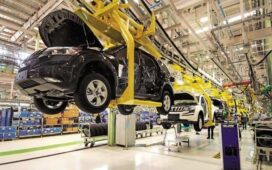Do you have a fuel chugger on your hands? The following are a couple of general justifications for why motor consumes oil:
It has Terrible Valve Seats
Valves are situated over the burning chamber in the chamber head. The valve-train is greased up by siphoning oil at 50 – 80 psi of tension into the highest point of the head. Oil seals (ordinarily round) are put at the highest point of the valves to stop the progression of oil down into the motor when the valve is open. At the point when the oil seal fizzles, more oil than is required will stream down into the ignition chamber and get singed. This is where you will see smoke emerging from your exhaust.
The Valve Guides are exhausted.
The valves are directed by little barrel shaped chambers called valve guides. Standard use causes mileage along the slop in the aides, and the overabundance hole permits the progression of oil down the valve stem into the ignition chamber to be scorched. For this situation, the hole is excessively perfect for the valve seal to stop the oil stream. It will have more hole over a time of use.
Unceremoniously pass up from Worn Cylinder Rings
Cylinders in the motor have seals around them as rings for two purposes:
1. To seal the burning chamber with the goal that the power created from the terminating of the chamber isn’t lost.
2. To give crucial oil to the chamber walls.
At the point when the rings break down, strain from the ignition inverts down into the oil container, compressing it, and constraining oil into the valve covers, through the breather framework, back into the fuel conveyance framework, and into the motor to be scorched.
Counteraction strategies
Continuously keep your vehicle’s oil channel and air channel changed routinely to limit ooze development and carbon develop down to a base. While you can’t stop mechanical wear, legitimate consideration and support will dial it back, setting aside you great many cash for a superior fuel utilization. The way you drive by not firing up the vehicle to 6,000 rpm (fires up each moment) or more consistently will draw out motor life.







